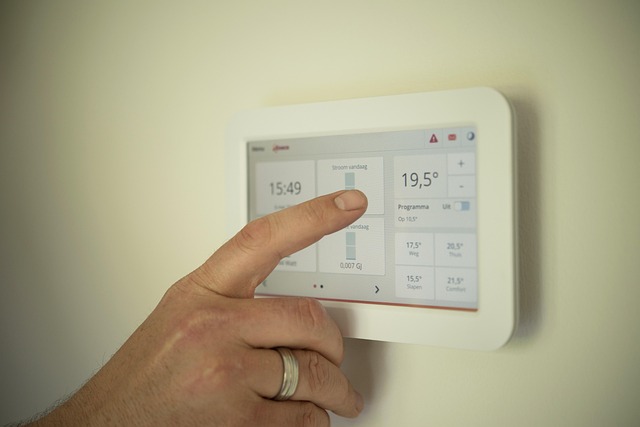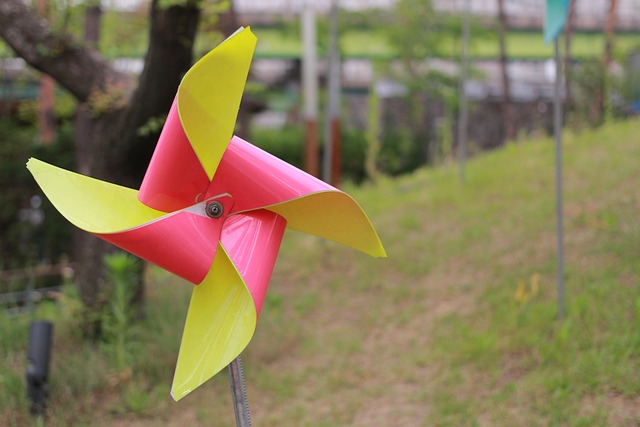Smart thermostats optimize energy efficiency and reduce carbon footprints through algorithms and sensors that learn user preferences and adjust heating/cooling systems. Installation is straightforward with online guides, requiring strategic sensor placement for accurate temperature readings. Choosing models with advanced learning routines, remote access via mobile apps, built-in sensors, and compatibility with HVAC systems and voice assistants enhances energy savings and comfort. DIY installation or professional smart thermostat installation services offer cost savings and environmental benefits through real-time energy data analysis.
Consider installing a smart thermostat to reduce your carbon footprint. This eco-friendly upgrade offers significant energy savings by learning your temperature preferences and automatically adjusting settings. This comprehensive guide walks you through understanding smart thermostats, evaluating your home’s placement, selecting the right model, step-by-step installation, programming custom settings, and monitoring your reduced carbon footprint.
- Understanding Smart Thermostats and Their Benefits
- Evaluating Your Home for Thermostat Placement
- Selecting the Right Smart Thermostat Model
- Step-by-Step Installation Guide
- Programming and Customizing Settings
- Monitoring Savings and Impact on Carbon Footprint
Understanding Smart Thermostats and Their Benefits

Smart thermostats are innovative devices that have gained popularity due to their significant role in enhancing energy efficiency and reducing environmental impact. Unlike traditional thermostats, these modern gadgets use advanced algorithms and sensors to learn your temperature preferences and adjust heating and cooling systems accordingly. By understanding and leveraging these features, homeowners can achieve considerable energy savings without compromising comfort.
The benefits of installing a smart thermostat extend beyond individual comfort levels. On a larger scale, they contribute to a global effort to decrease carbon footprints by optimising energy consumption in homes. With their precise temperature control and scheduling capabilities, these devices ensure that heating or cooling systems operate only when needed, leading to substantial electricity bills reduction. Moreover, programming a smart thermostat for energy savings is straightforward, allowing you to set custom schedules and temperature settings to match your daily routine, while smart thermostat setup tips and tricks can be easily found online, making the process accessible for all homeowners, even without professional assistance. Even an emergency plumber Bromsgrove might suggest considering this upgrade for its long-term benefits.
Evaluating Your Home for Thermostat Placement

Evaluating your home’s layout is a crucial step before installing a smart thermostat. The ideal location should offer unobstructed access to temperature sensors for accurate readings. These sensors typically monitor air and surface temperatures, so places like living rooms or bedrooms where people spend significant time are prime candidates. Avoid areas with direct sunlight exposure during the day as this can affect sensor accuracy. Moreover, consider the overall airflow in your home; kitchens and hallways might be suitable due to their role in temperature distribution.
The best practices for smart thermostat setup involve strategic placement to optimize indoor comfort with technology. By understanding your home’s dynamics, you ensure that the smart thermostat responds effectively to changes in occupancy and weather conditions, delivering energy-efficient heating and cooling solutions. This personalized approach is key to reducing your carbon footprint while maintaining a comfortable living environment.
Selecting the Right Smart Thermostat Model

When selecting a smart thermostat for your home, consider models that offer advanced features like learning routines and remote access via a mobile app. These capabilities ensure your thermostat adapts to your daily habits, optimizing energy efficiency and saving on utility bills. Look for brands that provide clear installation guides, such as wireless thermostat installation instructions, to make the process straightforward.
Additionally, smart thermostats with built-in sensors can automatically adjust settings based on occupancy and weather conditions, further enhancing energy savings without compromising comfort. Ensure the model you choose is compatible with your HVAC system and supports popular voice assistants for convenient control. With these features in place, you’ll not only reduce your carbon footprint but also enjoy improved temperature control tailored to your lifestyle.
Step-by-Step Installation Guide

Installing a smart thermostat is an effective way to reduce your carbon footprint and lower energy bills. Here’s a straightforward, step-by-step guide for DIY installation or when considering professional smart thermostat installation services. Start by choosing the right model for your space; ideal for small spaces, these devices are designed with versatile features.
First, locate your current thermostat and take note of its position and wiring. Then, prepare the new smart thermostat by unboxing it and familiarizing yourself with its controls. Connect the device to your home’s electrical system, ensuring proper grounding. Next, download the associated app on your smartphone for remote control and energy monitoring. Follow the instructions provided to set up your account and configure the settings according to your preferences. Once paired, test the thermostat’s functionality before enjoying its eco-friendly benefits in your install smart thermostat in bedroom or any other area of your home.
Programming and Customizing Settings

After installing a smart thermostat, the next step is to customize its settings to align with your energy-saving goals and daily routines. These thermostats allow for precise temperature control, so you can program specific temperatures for different times of the day. For instance, setting a lower temperature during sleep hours and raising it when you’re awake ensures comfort without unnecessary energy usage. Many smart thermostats also learn from your habits, automatically adjusting settings to save energy while maintaining comfort.
Consider these smart home integration tips: schedule “away” modes when you’re out of the house to reduce heating or cooling costs, and utilize the learning features to optimize temperature changes based on your routines. The ideal time for smart home upgrades is during periods of high energy usage, such as winter or summer, when the benefits will be most noticeable. If you’re unsure about installing a smart thermostat yourself, consider professional services offering smart thermostat installation to ensure a smooth and efficient setup.
Monitoring Savings and Impact on Carbon Footprint

After installing a smart thermostat, one of the most exciting aspects for homeowners is monitoring the savings generated and the impact on their carbon footprint. These advanced devices provide real-time data on energy usage, allowing users to track how much they’re saving by adjusting temperatures remotely or scheduling optimal settings. By analyzing this data, you can identify patterns and make informed decisions about your energy consumption.
Smart thermostat installation goes beyond mere comfort; it’s a powerful tool for adopting sustainable practices. The reduction in energy use translates directly into lower utility bills and a diminished carbon footprint. With smart heating and cooling solutions, you contribute to a greener environment while enjoying efficient indoor climates. This eco-friendly approach not only benefits the planet but can also provide long-term financial savings through responsible energy management.
Upgrading your home with a smart thermostat is a powerful step towards reducing your carbon footprint. By learning about their benefits, strategically placing them for optimal efficiency, and customizing settings to match your lifestyle, you can enjoy significant energy savings. Following our step-by-step guide and monitoring your results will empower you to make informed adjustments, ultimately contributing to a greener planet. Embrace the convenience and sustainability of smart thermostat installation today.
